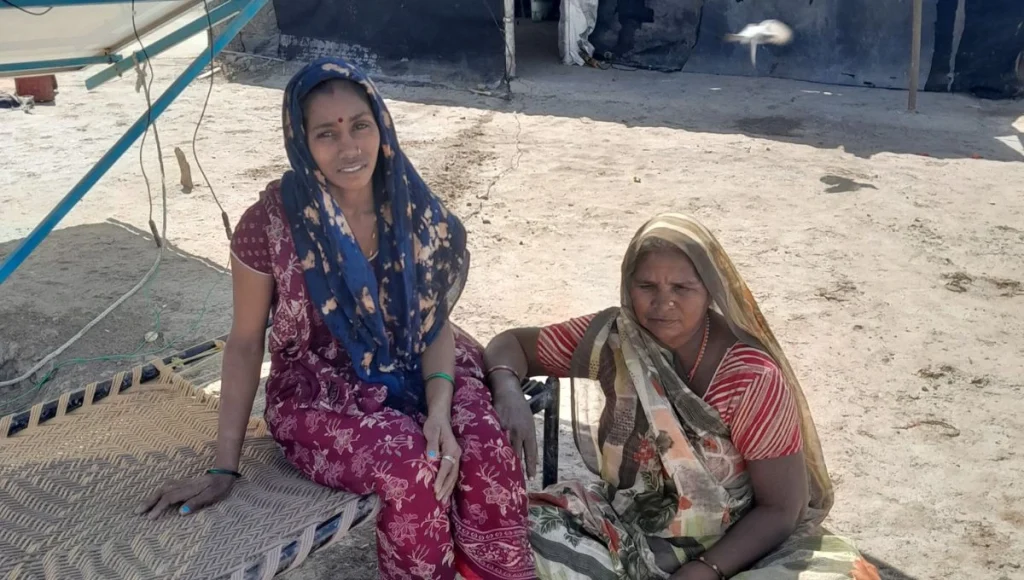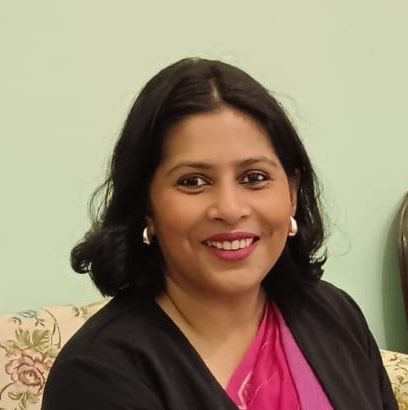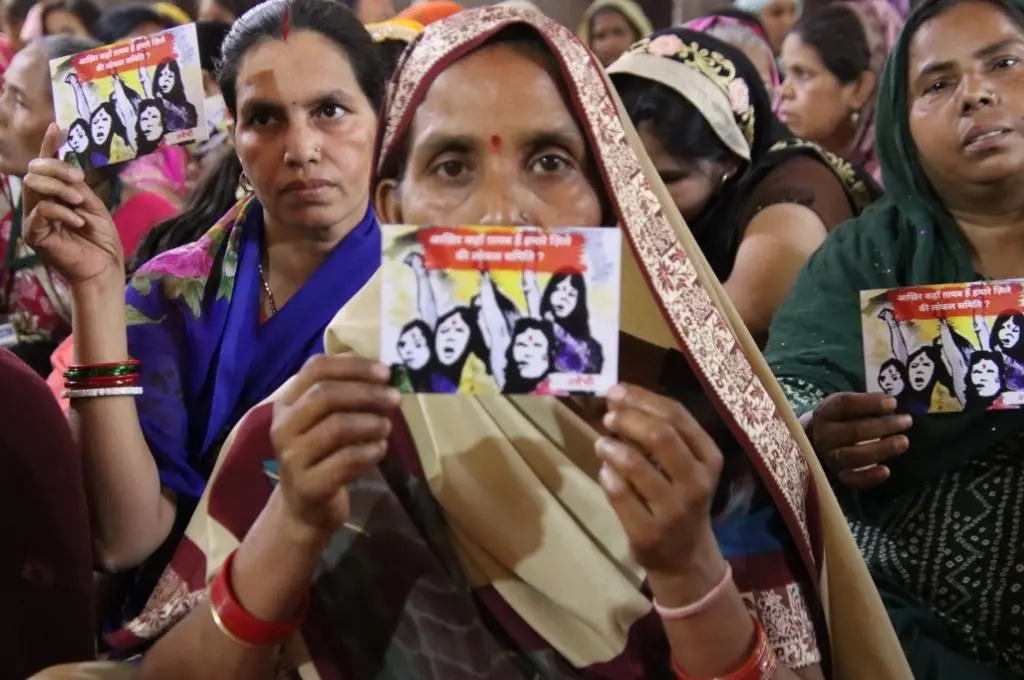Little Rann of Kachchh (LRK) is a marshy wetland spanning approximately 5,180 sq km in Gujarat. The climate here is arid, the soil highly saline, and temperatures can soar up to 52°C. While these extreme climatic conditions make this region ideal for salt farming, they pose significant strain on the Agariya people, who spend up to eight months a year working in the salt pans.
In February 2023, many Agariyas were served eviction notices. Those not registered during the official survey and settlement process nearly three decades ago were labelled illegal encroachers on a protected wild ass sanctuary. The looming threat of displacement, in combination with dire work conditions and limited access to clean water and nutritious food, has heightened the vulnerability of the Agariya community, particularly women.
The salt produced in the LRK is made using a 600-year-old traditional method. Popularly known as Vadagaru salt, its production is a labour-intensive process. An 80 to 120 ft kui or well is dug to access the brine, which is then extracted using solar pumps. The brine is transferred to evaporation and condensation pans until it reaches the optimal salinity for crystallization. Salt crystals are then churned using a wooden rake and dried, after which the harvested salt is collected in white mounds and transported for sale.


The word ‘agar’ means ‘salt pan’ in Gujarati. Agariya men and women work together to make the salt. While the men dig wells, operate solar pumps, and negotiate and manage the sale of salt with traders, women farmers are involved in raking, maintaining the bunds, and packaging and loading salt on to trucks for transportation. In addition to their work in the salt pan, women also tend to the household, including cooking food and taking care of their children.
Due to the nature of the work, both male and female workers suffer from ailments such as skin lesions, tuberculosis, and severe eye problems caused by intense reflections off the surfaces of the white salt deposits.
Agariya women, who comprise 40 percent of the labour force, work for at least eight hours a day for almost eight months every year, between October-November and June.

Marriage and life in the salt pan
For newlywed Jalpa, this is her first year in the LRK’s salt farms. As the community continues to engage in physically intensive labour under increasingly harsh climatic conditions, younger women like Jalpa envision a different life for their children. “I don’t want them to be salt farmers,” she shares.

Jalpa, who hails from a family of farmers, says, “Before my marriage, I did not know that I would have to endure such strenuous work.” Her husband Jagdish Bhai’s family had paid her family to set up the marriage. A lot of people do not want their daughters to be married into the Agariya community due to the strenuous conditions of living and working in the salt pans.

The Agariyas are also marrying their daughters into other farming communities, mentions Jog, an activist with the Agariya Hitrakshak Manch, an Ahmedabad based nonprofit that works on the Agariyas’ rights. Jassi Ben, a 65-year-old Agariya woman, confirms. “Since she [my daughter] was little, she has been working in the salt pans. At least after marriage she can live peacefully.”
These sentiments are also captured in the community’s folk songs. “Oh mother, the Agariya is ignorant and illiterate, why did you marry me to him? He makes me dig salt wells, pull the mud from the well and toss it out,” is the lament of a village girl in the song ‘Agariyo Agnani’.
Salt farming needs constant attention from the farmers, and Jalpa, though new to the profession, realises that. When asked how she deals with the pain during her periods, she says, “What to do? This is work and we have to do it.”

The dwindling health of Agariya women
Churning crystals of salt in her farm in the high heat of April is challenging. Jalpa wears boots to protect her feet from the coarseness of salt crystals. She bought the boots for INR 600 from Patdi, a village located 10 km from the LRK. “The government gives only one pair of boots per family and does not provide any caps with which to protect our faces and heads against the harsh sunlight,” she mentions.

“Men and women have feet that are different not only in size but also in structure. Women need comfortable shoes, but due to the lack of gender sensitivity among policymakers, the needs and priorities of Agariya women are not taken into consideration,” Jog adds.
Despite sharing an equal burden of labour, women are considered secondary in salt production. “Women are excluded from many development schemes. Deliberately neglecting women and girls in this way is structural violence,” says Jog.
Medical facilities remain scarce in the area, and the women mention that care is limited to infrequent visits by mobile medical vans. Moreover, these vans are often unaccompanied by female health staff, rendering healthcare effectively inaccessible for Agariya women. Gauri Ben, now in her 60s, notes that in case of an emergency–for instance, when a woman goes into labour and needs immediate help–it is the community that must help with the delivery. Many years ago, Gauri Ben herself lost two of her children during labour because there were no doctors to provide assistance.
Malnourishment is also a significant issue in the area. Families have no means to store vegetables. As a result, people’s diets are mostly restricted to foods that do not require refrigeration, such as chilli paste, bajra rotis, potatoes, and black tea.
Typically, the area of a salt pan is approximately 10 acres, and all Agariya families working on a salt pan reside within its confines. Their homes are typically minimal structures made of plastic sheets stretched over bamboo poles, with gunny bags used to patch holes. Solar panel installations mark the arrival of newer technologies to the area.
Babi Ben, 25, has been working as a salt farmer for the last three years. She wakes up early in the morning and goes to nearby fields full of acacia vegetation to go to the toilet. Since water is scarce in the region, bathing is a luxury. Every two weeks, she goes to her village nearby to take a proper bath. Every 20 days, tankers from the government arrive with about 2,000 litres of water, which households collect and store in plastic barrels. However, this water is not enough for the average Agariya family of five. Due to inadequate water and the lack of sanitation facilities, urinary tract infections (UTIs) are a common problem among women here.
Before the advent of mobiles, flashes of mirrors served as a sign language for the Agariyas, who worked in isolation in this vast desert. If there was an emergency or water shortage, women would use mirrors and sunlight to flash signals to the men who would be working at a faraway spot.
Currently, in interior areas of the LRK, where mobile network coverage remains dismal, mirror flashes are still used to communicate. Confined to the white expanses of the salt pan for the majority of the year, the Agariya community has cultivated a rich folk tradition, with songs detailing their lives and experiences.
Here, Gauri Ben sings a folk song where the Agariyas are celebrating their earnings as farmers as they go to the markets to buy new clothes:
—
Know more
- Learn more about why Agariyas are being evicted from Little Rann of Kachchh.
- Learn why Dalit women in Tamil Nadu’s salt pans get paid less.
- Learn more about the occupational hazards faced by salt pan workers.




